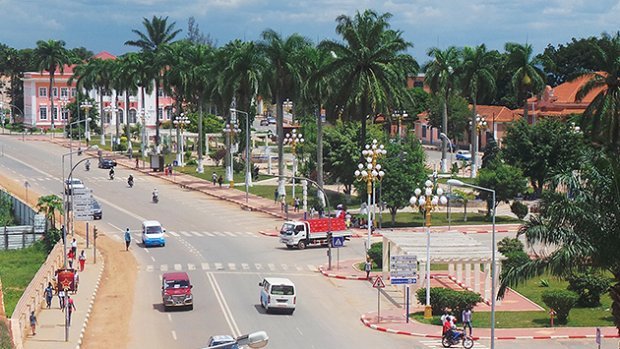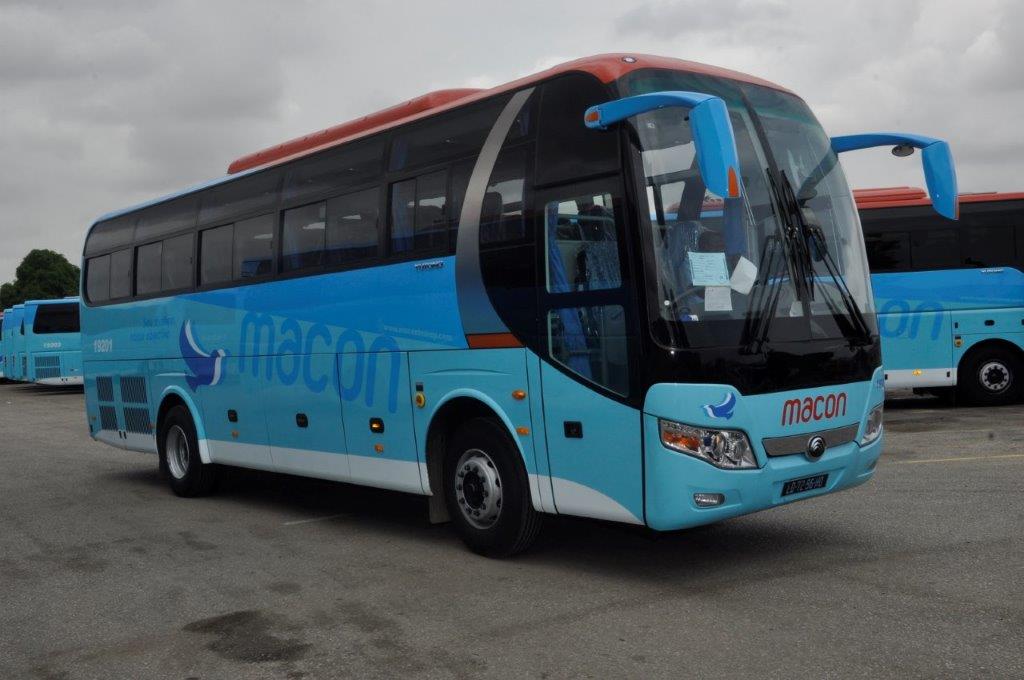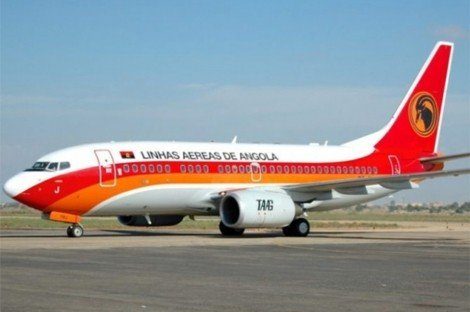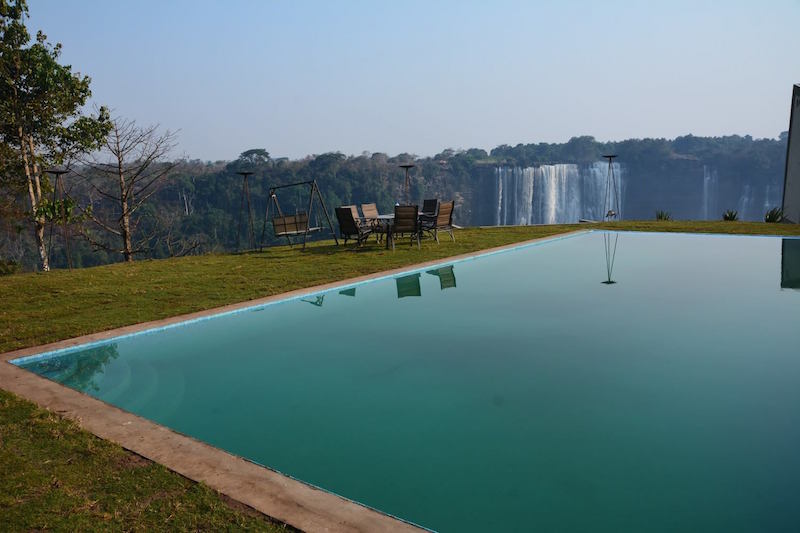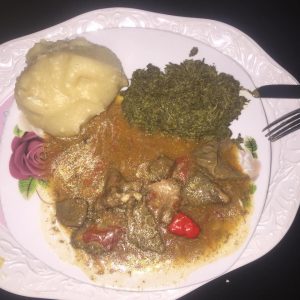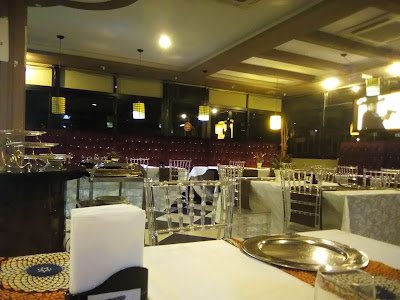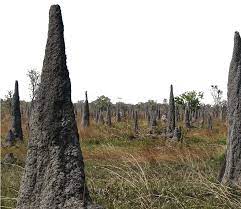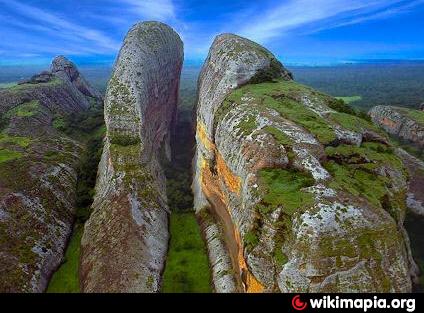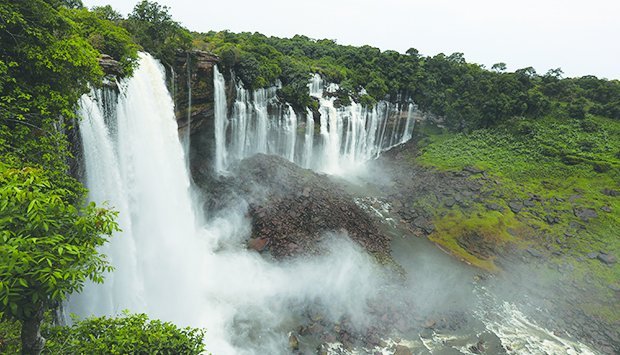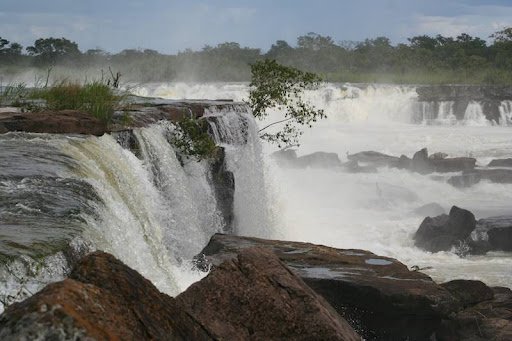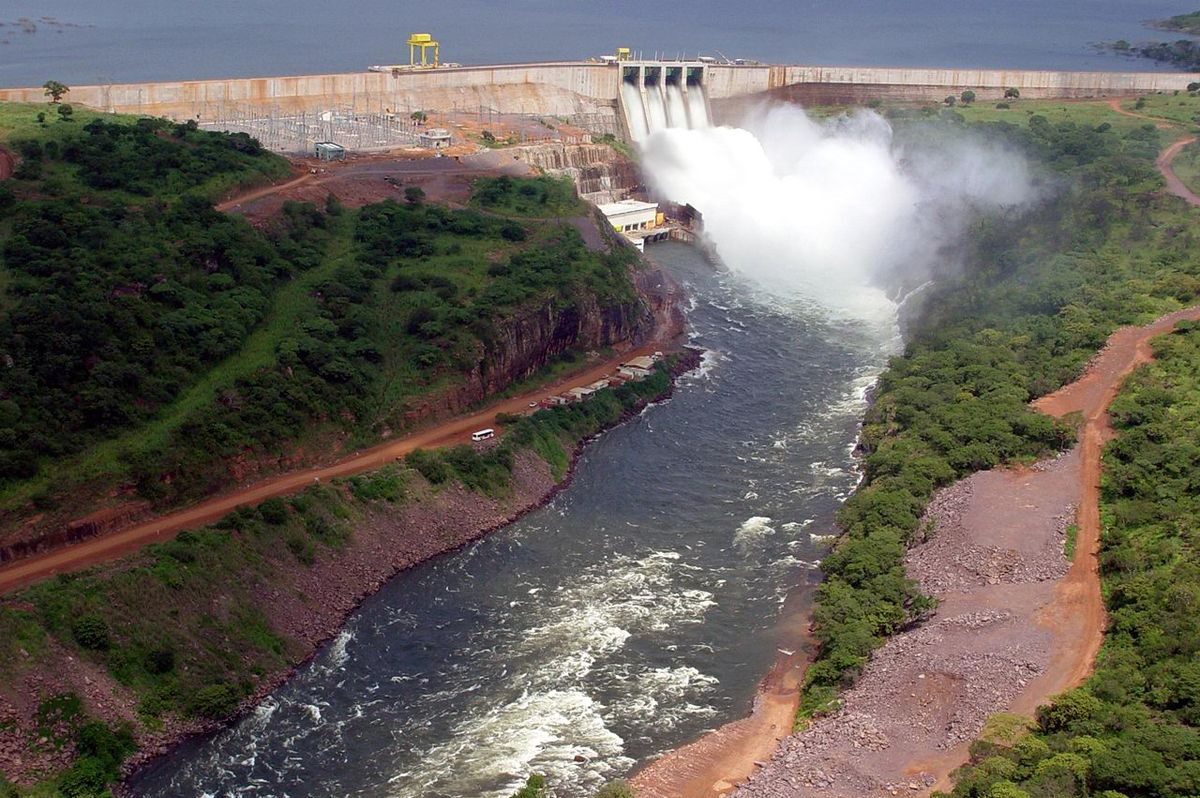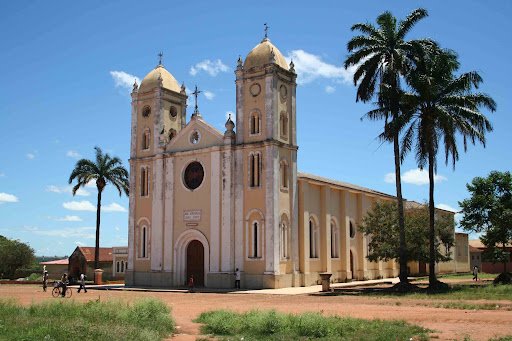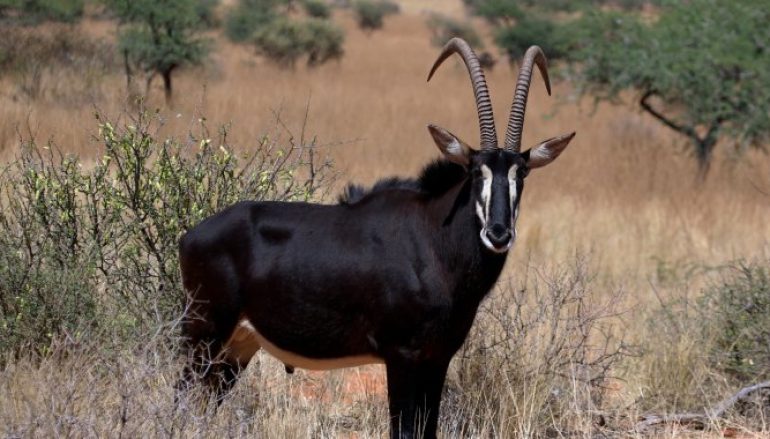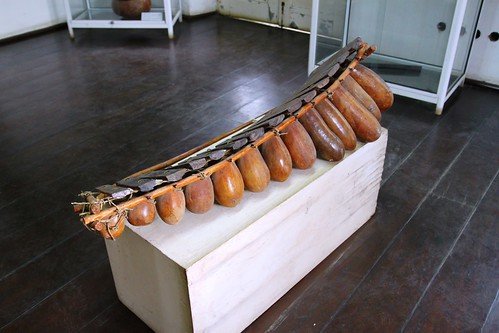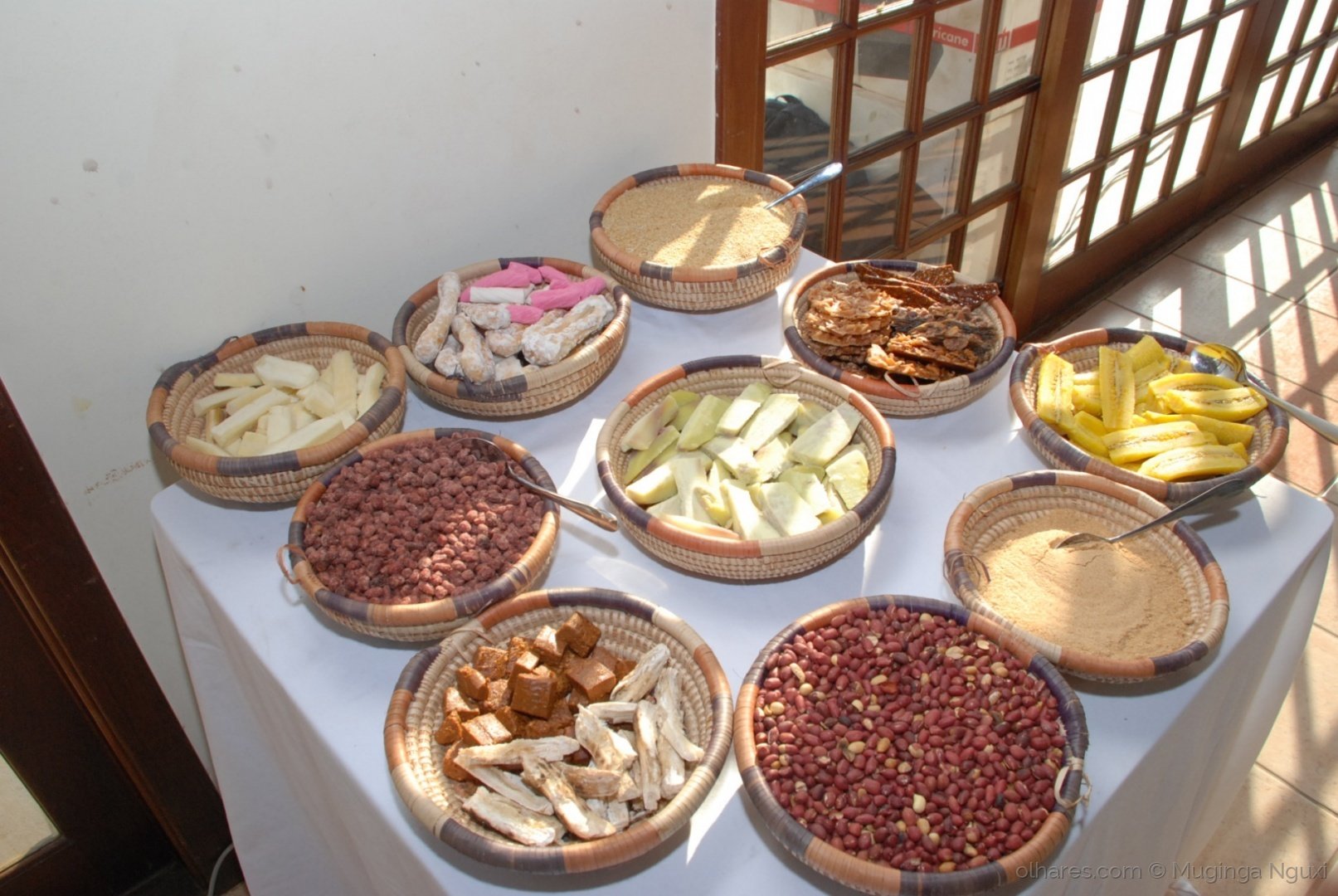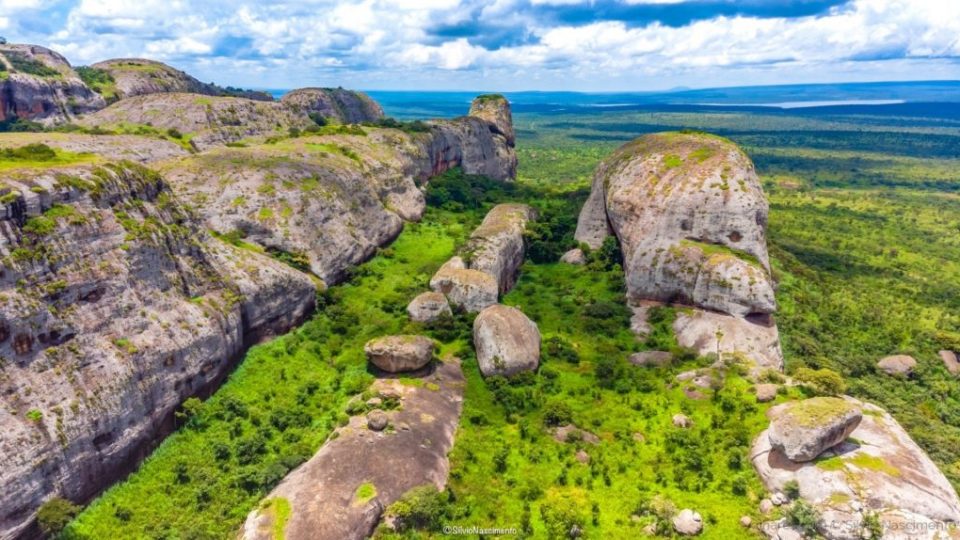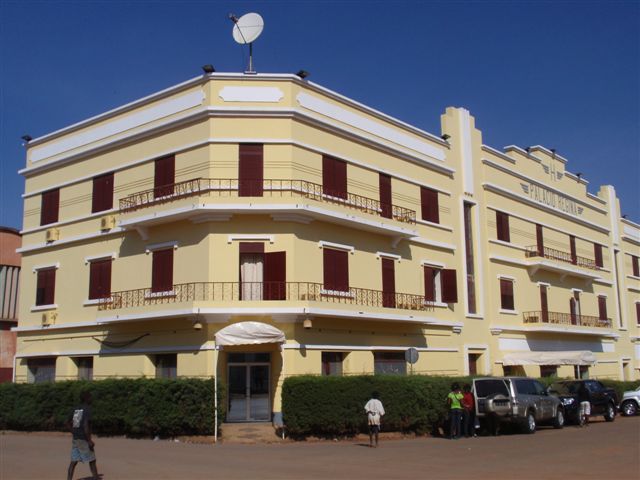- Malanje City
History
Malanje province is one of the provinces of Angola, located in the northern region. The city of Malanje, founded in 1852, has a railway (since 1909) that connects it to the city of Luanda, which has allowed the development of that region. In 1932, it became a city. It is located about 423 km from Luanda and 175 km from N'Dalatando.
The word “Malanje” would originate in the Kimbundu language, and would have as meaning the term “the stones” (ma-lanji), but there are several versions about the origin of the name Malanje.
Geography and Demographics
total area and population
Malanje province has a total area of 97,602 km2, has an estimated population of 968,135 inhabitants (2014 Population Census Data). The population has a very diverse origin, inserted in 3 linguistic groups: Kimbundu, Kikongo and Ambundo.
The most widely spoken national language in Malange province is Kimbundu.
Climate
The climate is humid tropical mesothermic, the coldest month is June with an annual average of 20ºC and the warmest months are March and April, with an average of 25ºC. There are two seasons throughout the year: Rainy season which covers about nine (9) months (August to May) and the other is the cacimbo season which runs from May 15th to August 15th.
Delimitation of the province
is confined by Democratic Republic of Congo to the northeast, and by the Angolan provinces of Uíge to the north, by the North Kwanza to the west, North Lunda to this, South Lunda to the southeast, bié south and South Kwanza to the southwest.
The province is divided into the following 14 municipalities: Cacuso, Caombo, Kalandula, Cambundi-Catembo, Cangandala, Cuaba Nzogo, Cunda-Dia-Baze, Luquembo, Malanje, Marimba, Massango, Mucari, Quela and finally the municipality of Quirima
How to get
By Plane
Major commercial airlines fly to the province, such as TAAG Linhas Aéreas de Angola.. You arrive at the domestic airport in Luanda, and then buy a ticket to Malanje (Aeroporto)
By Bus
The roads have been repaired and it is possible to reach Malanje via Luanda, with the road companies AngoReal and Macon.
- Macon
- TAAG Angola Air Lines
Where to stay
To stay in Malanje province, our website has the following suggestions that will make your stay memorable: Regina Palace Hotel, Hotel Palanca Negra, or in order to be closer to nature, you can stay at Pousada Duque Bragança which provides a wonderful view of the Kalandula Falls.
- Pousada Duque Bragança
Transport
To get around the city you won't have any problems, as the options suit all budgets:
Rent-a-car services: Jetcost.
Bike taxi: There is a motorcycle taxi service available from almost every corner of the city, which takes the passenger to their final destination.
Public transportation: if you feel safe and a little adventurous to explore this option, there are blue and white vans that circulate through the city, as well as mini buses. However, to use them you must know where you are going or ask the driver's assistant (collector) to indicate you, as the stops are not signposted.
Typical dishes & where to eat
Typical dishes are kizaca, usse, dried meat and game, kinhanza, ginguinga (made with offal), which is always accompanied by cassava or corn funge.
- It sniffs very small, and kizaca
To taste a little Malajina gastronomy you should visit the following restaurants: The backyard, O Triangle restaurant, or you can even go to an informal market stall, and enjoy typical dishes with your hand without the help of cutlery (fork and stick).
- Triangle Restaurant
What to do
In this province we find the following national parks and reserves that are mandatory places to visit:
- O Kangandala National Park established as an integral reserve in 1963, with an area of 600 km2. It is rich in birds, such as wild ducks, bonnets, partridges, pigeons, among others
- THE Railway Forest Reserve of Malanje which has 200 km2
- THE Luando Nature Reserve, is located between the provinces of Malange and Bié, with 8,280 km2
- Luando Forest Reserve
- Tombs of the Queen N'Ginga M'Bandi, N'Gola M'Bandi are situated in Kwaba N'Zóji. Among the most important monuments and sites, the tombs of King Ngola Kiluanji, Queen Njinga Bandi and her brother, Mbingi a Mbandi occupy a prominent place, located in the village of Mukulu a Ngola, municipality of Marimba. In that village, the people who take care of the tombs of the Kings belong to the royal family. It is up to them to organize cleaning and visits. Visitors have to dress in a special outfit.
- Black Stones of Pungo Andongo
Rock formations of great natural beauty, where the footprints of Queen N'Ginga M'Bandi and King N'Gola Kiluange are said to be marked. The Black Stones are a set of rock blocks of enormous dimensions that occur in the locality of Pungu-a-Ndongo, municipality of Cacuso, province of Malanje. The ensemble is composed of intrusive rocks that have been exposed by erosion, over the centuries, and well-consolidated sedimentary rocks (sandstones and conglomerates).
- Black Stones from Pungo to Ndongo
Pungo Andongo, however, is more than just a place where geological anomalies occur. It is a place full of myths, legends, traditions and cultural values. Due to its topographical and geomorphological characteristics, Pungu-a-Ndongo served as a fortress for the Ngola Kings, having been, at that time, capital of the Kingdom of Ndongo.
When visiting Pungu-a-Ndongo, visitors should not forget to visit King Ngola Kiluanji's Footprint, Queen Njinga's Footprints, Cantinho do Céu, Pedra do Velho Caturra and Stone of the Sacred Orchard. It is within walking distance of the Capanda Dam, another tourist spot worth visiting.
- Kalandula Falls –
The Kalandula falls are the fascinating tourist attraction in Malanje province and one of the most important in Angola. They occur on the Lucala River and are about 500 meters high. They are the second highest falls in Africa. They form a permanent rainbow and an illusory fog. It has a viewpoint and is a good place for walks and picnics.
- Kalandula Falls
- Kwanza Rapids
- Kapanda Dam
- mouth of love and spring of love, it is here, 15 km from the city, that the Malanje river is born
- Kwanza Rapids
- Kapanda Dam
Other Monuments
- Ruins of Duke of Bragança
- old palace
- Well of the Cathedral
- Cathedral of Malanje
The City festivities take place on February 13th and February 4th is also very celebrated due to the massacre of Baixa de Kassange. In traditional festivals, the typical dances are massemba and n'buenzena to the sound of instruments such as marimba from Kalandula, Kuissange, Hungo and Tambores known as Batuques.
What to bring in the suitcase
- Winter clothes
- Boots
- Moisturizing cream for skin
- Cash (we still live a lot from the informal economy)
- Vaccination card (if coming from abroad)
- The traffic here is very fluid
- Good mood!
Tips for managing expectations .
- They worship the “elders” and their magical-religious beliefs.
- It is a city with no traffic (easy to use cars);
- The quality of services provided may not exceed expectations (Especially public services);
- It is possible to run into electrical power problems;
- In some municipalities there is no mobile network coverage;
- There are tourist places that, in order to have access, the local authorities (Soba) must first carry out spiritual rituals to ask their ancestors for authorization for a particular visit. The image below illustrates the national authorities in Angola.
what to take home
Take a photo of the Giant Sable
The Giant Palanca Negra is a large animal that lives exclusively in Angola, with particular incidence in the Luando Nature Reserve, Malanje province. Due to its rarity, the Palanca Negra is a symbol of Angola.
- Giant Black Sable
Lead to Marimba which is a traditional musical instrument used in the lands of Malanje, and finally take the land delicacies.
- Marimba
- land delicacies
With this tour guide you can enjoy a complete visit to the land of the Giant Palanca Negra. Please let us know if this article was helpful to you in the comments below.
Enjoy it!

